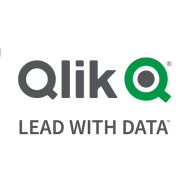

Find out in this report how the two Cloud Data Integration solutions compare in terms of features, pricing, service and support, easy of deployment, and ROI.
We have not purchased any licensed products, and our use of Elastic Search is purely open-source, contributing positively to our ROI.
It is stable, and we do not encounter critical issues like server downtime, which could result in data loss.
The main benefits observed from using Elastic Search include improvements in operational efficiency, along with cost, time, and resource savings.
I conducted a cost comparison with the AWS service provider, and this option is much cheaper than the Kinesis service offered by AWS.
Customers have seen ROI with Qlik Replicate because they get their data for analysis faster, enabling quicker decision-making compared to traditional data sourcing methods.
The customer support for Elastic Search is one of the best I have ever tried.
They have always been really responsible and responsive to my requests.
I would rate technical support from Elastic Search as three out of ten.
Even priority tickets, which should be resolved in minutes, can take days.
Support response times could be improved as there are sometimes delays in receiving replies to support cases.
I would rate its scalability a ten.
Since we're on the cloud, whenever we need to upgrade or add resources, they handle everything.
I can actually add more storage and memory because I host it in the cloud.
The system could be scaled to include more sources and functions.
The data transfer sometimes exceeded the bandwidth limits without proper notification, which caused issues.
The stability of Elasticsearch was very high.
Elastic Search is quite stable.
This can create problems for new developers because they have to quickly switch to another version.
It is primarily based on Unix or Linux-based operating systems and cannot be easily configured in Windows systems.
The consistency and stability of Elasticsearch are commendable, and they should keep up the good work.
It is a core-based licensing, which, especially in the banking industry, results in the system capacity being utilized up to a maximum of 60%.
Qlik Replicate could be improved in the next release by incorporating more monitoring options to monitor the logs.
We used the open-source version of Elasticsearch, which was free.
Elastic pushes clients to buy the Enterprise edition instead of the Premium edition, and we don't see the value in that other than to spend more money more quickly.
Licensing is calculated based on the machine's total capacity rather than actual usage.
For Qlik Replicate, the setup cost includes the requirement of a server, which represents the hardware cost that must be covered.
Elastic Search makes handling large data volumes efficient and supports complex search operations.
The most valuable feature of Elasticsearch was the quick search capability, allowing us to search by any criteria needed.
The speed with which Elastic Search is able to search through all of the documents we place into it is quite remarkable, as we search through 65 billion documents in less than a second in most cases, on a constant consistent basis.
The most valuable feature of Qlik Replicate is their change data capture feature.
Data retrieved from the system can be pushed to multiple places, supporting various divisions such as marketing, loans, and others.


| Company Size | Count |
|---|---|
| Small Business | 32 |
| Midsize Enterprise | 9 |
| Large Enterprise | 36 |
| Company Size | Count |
|---|---|
| Small Business | 9 |
| Large Enterprise | 10 |
Elasticsearch is a prominent open-source search and analytics engine known for its scalability, reliability, and straightforward management. It's a favored choice among enterprises for real-time data search, analysis, and visualization. Open-source Elasticsearch is free, offering a comprehensive feature set and scalability. It allows full control over deployments but requires managing and maintaining the infrastructure. On the other hand, Elastic Cloud provides a managed service with features like automated provisioning, high availability, security, and global reach.
Elasticsearch excels in handling time-sensitive data and complex search requirements across large datasets. Its scalability allows it to handle growing data volumes efficiently, maintaining high performance and fast response times. Integrated with Kibana, Elasticsearch enables powerful data visualization, providing real-time insights crucial for data-driven decision-making.
Elastic Cloud reduces operational overhead and improves scalability and performance, though it comes with associated costs. It is available on your preferred cloud provider — AWS, Azure, or Google Cloud. Customers who want to manage the software themselves, whether on public, private, or hybrid cloud, can download the Elastic Stack.
At its core, Elasticsearch is renowned for its full-text search capabilities, capable of performing complex queries and supporting features like fuzzy matching and auto-complete.
Peer reviews from various professionals highlight its strengths and weaknesses. Pros include its detection and correlation features, flexibility, cloud-readiness, extensibility, and efficient search capabilities. However, users have noted challenges like steep learning curves, data analysis limitations, and integration complexities. The platform is generally viewed as stable and scalable, with varying degrees of satisfaction regarding its usability and feature set.
In summary, Elasticsearch stands out for its high-speed search, scalability, and versatile analytics, making it a go-to solution for organizations managing large datasets. Its adaptability to different enterprise needs, robust community support, and continuous development keep it at the forefront of enterprise search and analytics solutions. However, potential users should be aware of its learning curve and the need for skilled personnel for optimization.
Qlik Replicate is a data replication solution for replicating data from one source database to another for business intelligence software. It offers data manipulation and transformations, replication without impacting source databases, and ease of use without needing ETL. The solution is stable and user-friendly, with detailed logging and support.
Qlik Replicate has improved the organization by allowing each team to replicate their data into a single-source data location. The most important feature of Qlik Replicate is its ability to replicate and update records without needing a programmer.
We monitor all Cloud Data Integration reviews to prevent fraudulent reviews and keep review quality high. We do not post reviews by company employees or direct competitors. We validate each review for authenticity via cross-reference with LinkedIn, and personal follow-up with the reviewer when necessary.